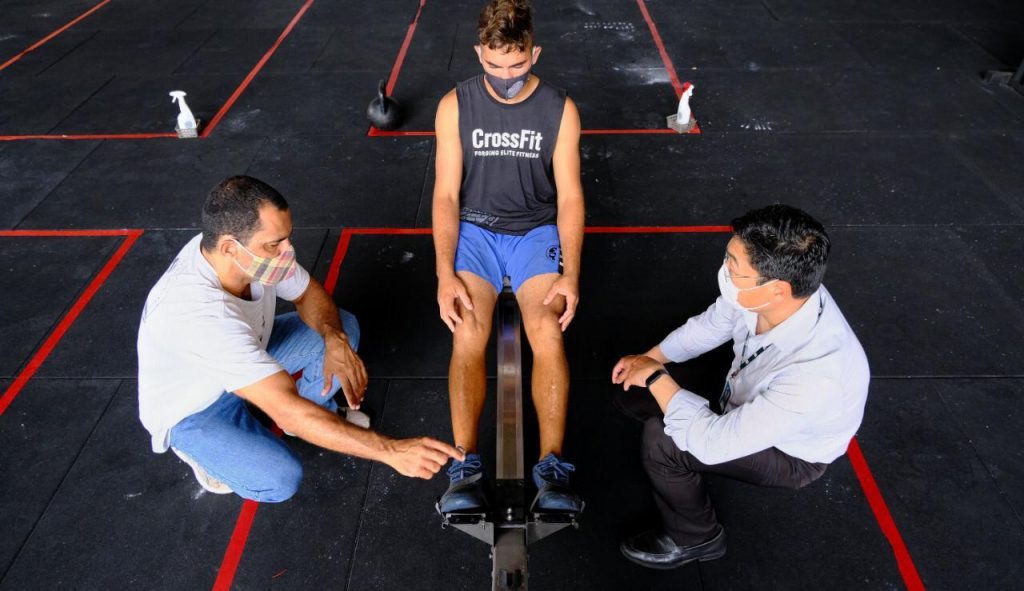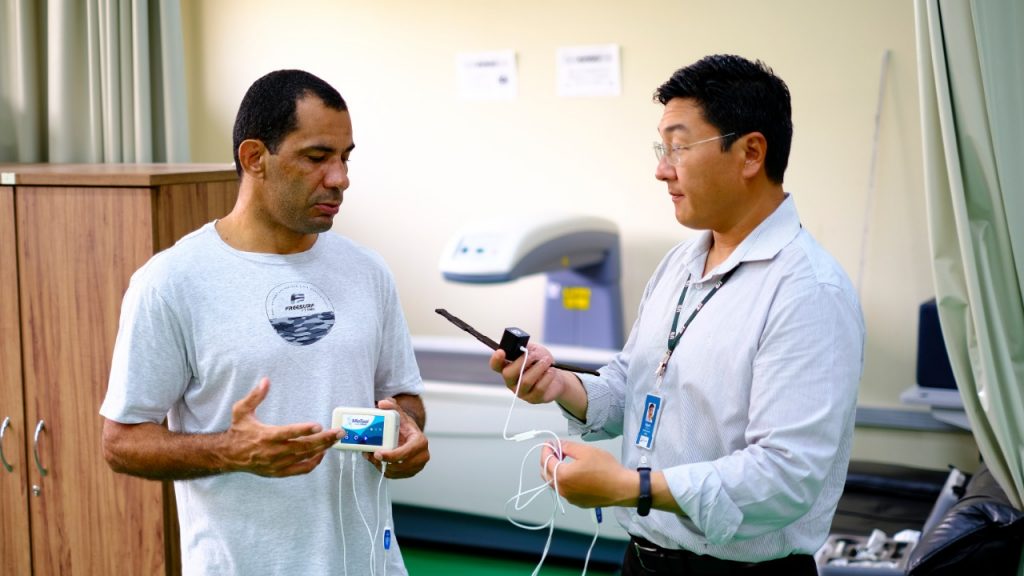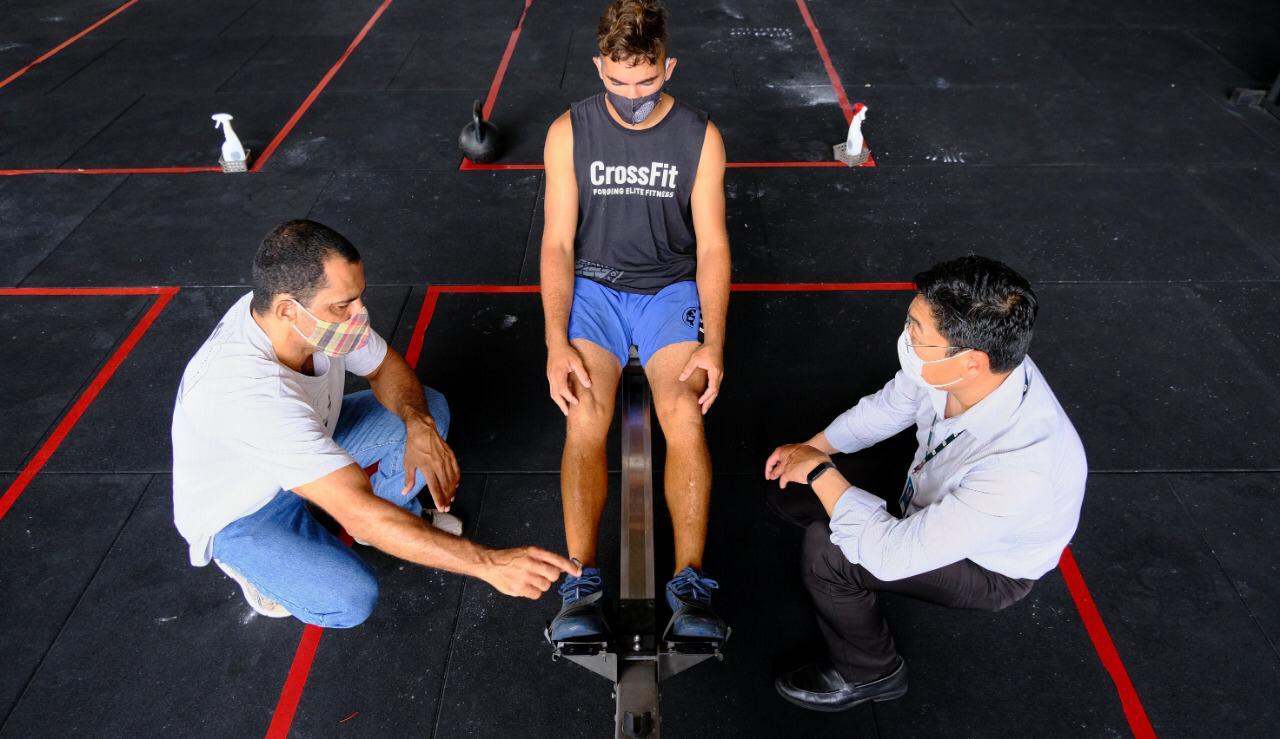
* Renata Moura
Journalist
Researchers from the Federal University of Rio Grande do Norte (UFRN) developed, in partnership with Edmond and Lily Safra International Institute of Neurosciences, from the Santos Dumont Institute (ISD), a device that brings new perspectives to the rehabilitation of people with neurological and orthopedic disorders that reduce muscle strength and cause restrictions in the movements of the trunk and legs.
“These are patients with spinal cord injury, stroke, fractures and Parkinson's, for example, who have reduced mobility and who, with a paddle adapted for the first time for them, gain an ally to control their lower limbs – which also has the advantage of the perspective being more accessible, cheaper than others, and not needing electricity”, says Edgard Morya, professor and research coordinator at the IIN-ELS/ISD, who participated in the analysis of the project's data and, in the next stage, will act in the evaluation of the effects of 'rowing'.
“We will be able to quantify the research data in the neurorehabilitation laboratory at the ISD, with people using equipment such as the Lokomat – a kind of robotic orthosis – and the Zerog, which makes it possible to walk with the suspension of body weight”, he adds.
Access to the population
The device's patent application was registered in December by UFRN and the details of the research published this week in a report on the university's website (Click here to read the full text). There is still no perspective of when the innovation may reach the Unified Health System (SUS) or the market, but investments to enable access to the population are already on the radar.
“Now we will move on to the stage of making manufacturing feasible with companies interested in the equipment”, said, in an interview with the UFRN portal, José Carlos Gomes da Silva, one of the university scientists involved in the development of the so-called “rowing device to aid posture maintenance , muscle and bone.

The researchers explain that the device allows the performance of actions similar to those of a rower, with the objective of improving the movements of extension and flexion of the knees and hips. It is the user's own weight that works as a load for training, which helps maintain lean mass (muscles), bone density, balance and force distribution between the limbs.
This was the first patent application to register the name of Instituto Santos Dumont. At UFRN, the registration of intellectual property is linked to the Graduate Programs in Physical Education (PPGEF) and Health Sciences (PPGCSA) at the university, as well as the Physical Activity Research Base (Afisa) and the Laboratory Program do Movimento (LABMOV), both from the Department of Physical Education (DEF/UFRN).
The filing of the patent application took place in December and its authors, in addition to Gomes and Morya, are UFRN researchers Márcio Valério de Araújo, Pablo Javier Alsina and Paulo Moreira Silva Dantas.
Gomes observes in the interview on the University website that the patent application is the result of multidisciplinary work, with inventors from the areas of physical education, engineering and neuroengineering and that “patenting an invention is a direct result of the process of transforming academic ideas into problem solutions for the society".
*With information from journalist Wilson Galvão, from the UFRN Innovation Agency.
Text: Renata Moura – Journalist / Ascom – ISD
Photos: Cícero Oliveira / Ascom – UFRN
Communication Office
comunicacao@isd.org.br
(84) 99416-1880
Santos Dumont Institute (ISD)
It is a Social Organization linked to the Ministry of Education (MEC) and includes the Edmond and Lily Safra International Institute of Neurosciences and the Anita Garibaldi Health Education and Research Center, both in Macaíba. ISD's mission is to promote education for life, forming citizens through integrated teaching, research and extension actions, in addition to contributing to a fairer and more humane transformation of Brazilian social reality.















